Computer Science and the Social Sciences
Prepared for the 2023 meeting of the Computer Science Teacher’s Association
Michael Flynn
Department of Political Science
011C Calvin Hall
meflynn@ksu.edu
2023-06-24
Overview
- A little bit of background about me
- Talk about what my workflow looks like
- Show which languages/software works with various stages
- Examples
About me
Some background info:
Political Scientist
Research focus:
- US foreign policy
- Political economy of security cooperation
- Social, political, and economic effects of US military deployments
- Statistical research methods
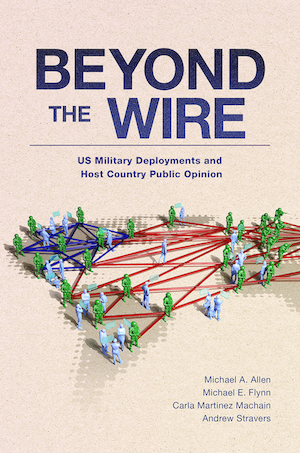
Goals
What is it we want to do?
A few things:
- Answer some question about the world
- Causal inference
- Description
- Prediction
Regardless of specifics we want to make our work…
- Verifiable
- Reproducible (Someone can get the same results by using our data)
- Replicable (Someone can get the consistent results using new/different data)
Methods
How do we do what we do?
In my case…
- Lots of statistical data analysis
- Requires wrangling large amounts of data (Typically looks like a spreadsheet)
- Analyzing that data
- Writing up articles or reports based on results
A Disclaimer
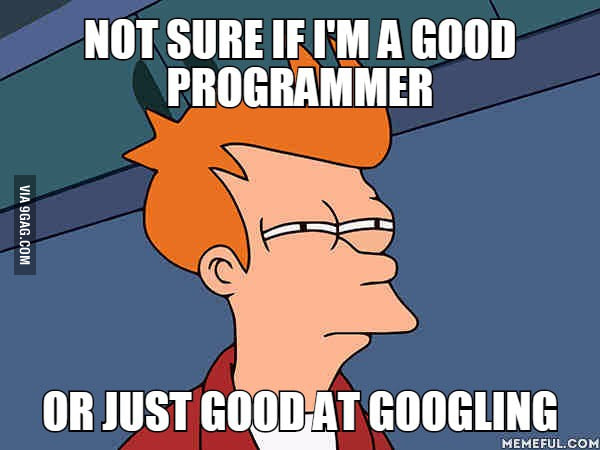
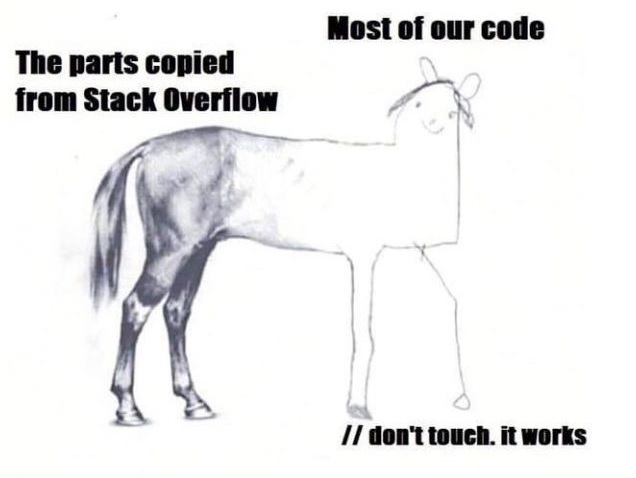
Learn To Code!
Sure, but what?
- HTML
- CSS
- SCSS
- C++
- Ruby
- Matlab
- Perl
- SAS
- R
- SPSS
- Stata
- Stan
- Python
- Julia
- SQL
- Markdown
- LaTex
- Etc.
Social Science Workflow?

Social Science Workflow?

Social Science Workflow?

Social Science Workflow?

Social Science Workflow?

Social Science Workflow?
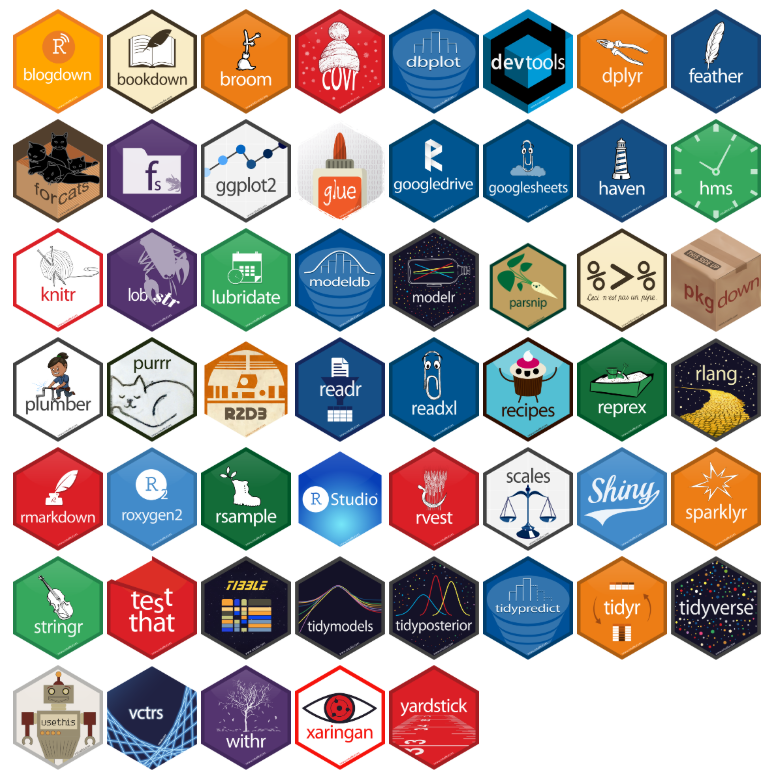
Social Science Workflow?
Reasons to like R
- It’s free!
- Open source
- Widely used in academia, government, industry, etc.
- Accessible
- Statistical analysis
- Writing
- Distribution
- Web scraping
- Data management
- Integrates with several other languages

Stuff You Can Do With R!
Data Analysis
You can make great slides like these with Quarto, and even include code chunks and output!
library(flynnprojects) # Load library for theme
library(tidyverse) # Load tidyverse
data <- tibble(x = rnorm(n = 1e4, # Generate some fake data. 10k obs with mean at 0 and standard deviation of 2
mean = 0,
sd = 2))
ggplot(data, aes(x = x)) + # Plot the data
geom_density() +
theme_flynn() +
labs(x = "x",
y = "Density")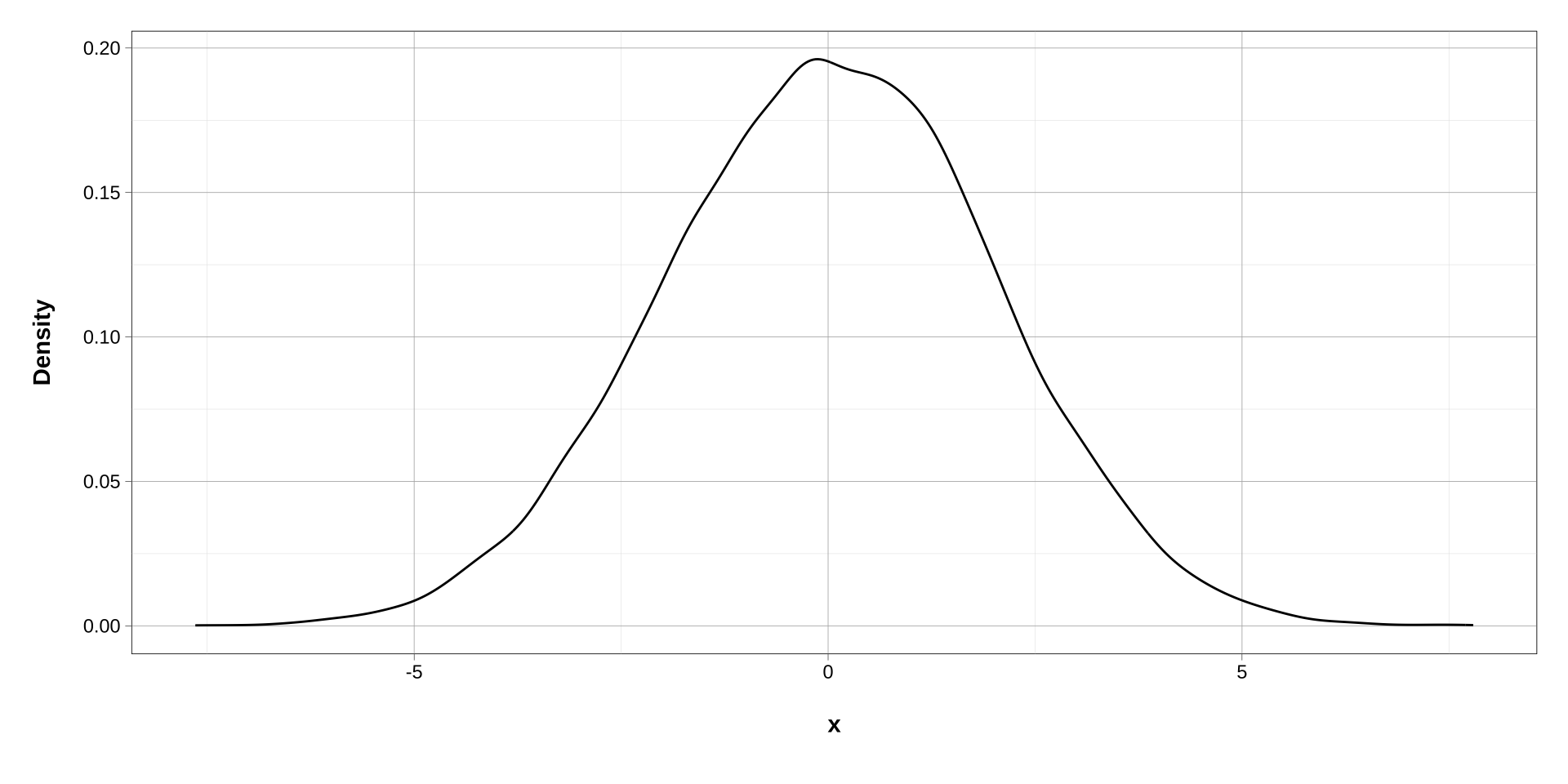
Maps
library(sf)
#devtools::install_github("UrbanInstitute/urbnmapr")
library(urbnmapr)
map <- get_urbn_map(map = "counties",
sf = TRUE)
ggplot() +
geom_sf(data = map,
aes(geometry = geometry,
fill = state_abbv == "KS")) +
guides(fill = "none") +
theme_void() +
viridis::scale_fill_viridis(discrete = TRUE,
option = "magma",
begin = 0.2,
end = 0.9,
direction = -1)
Web Scraping
library(flynnprojects)
library(rvest) # Load rvest package for web scraping
sysfonts::font_add_google("Oswald", family = "oswald") # Enable custom font
showtext::showtext_auto()
showtext::showtext_opts(dpi = 300)
url <- "https://en.wikipedia.org/wiki/Gordon_Ryan" # Paste a link to Gordon Ryan's Wikipedia page
read_page <- read_html(url) # Feed url into function
read_tables <- html_table(read_page)[[4]] # Pull win/loss table from table 4
time_series <- read_tables |> # Create separate year variable
mutate(year = stringr::str_extract(Year, "\\d\\d\\d\\d")) |> # Extract year
group_by(year) |> # Group by year and type
dplyr::summarise(total_count = n(), # Generate summary counts
win_count = sum(Result=="Win")) |>
pivot_longer(cols = c("total_count", "win_count")) |> # Reshape to tidy format
mutate(name = factor(name, # Edit variable labels
levels = c("win_count", "total_count"),
label = c("Wins", "Total Matches")),
year = as.numeric(year)) # Make year numeric from char
ggplot(time_series, #Plot data
aes(x = year, # Set aesthetics
y = value,
color = name)) +
geom_line(linewidth = 1.5, # Line geom
position = position_dodge(width = 0.2)) + # Add some dodge to help w/overlap
geom_point(size = 3.0, # Point geom
position = position_dodge(width = 0.2)) +
scale_x_continuous(limits = c(2012, 2022), # Customize scale
breaks = seq(2012, 2022, 1)) +
flynnprojects::theme_flynn(base_family = "oswald") +
viridis::scale_color_viridis(option = "turbo",
discrete = TRUE,
begin = 0.1,
end = 1.0) +
labs(x = "Year",
y = "Count",
color = "Count",
title = "Gordon Ryan's Wins and Total Matches, 2012—2022") 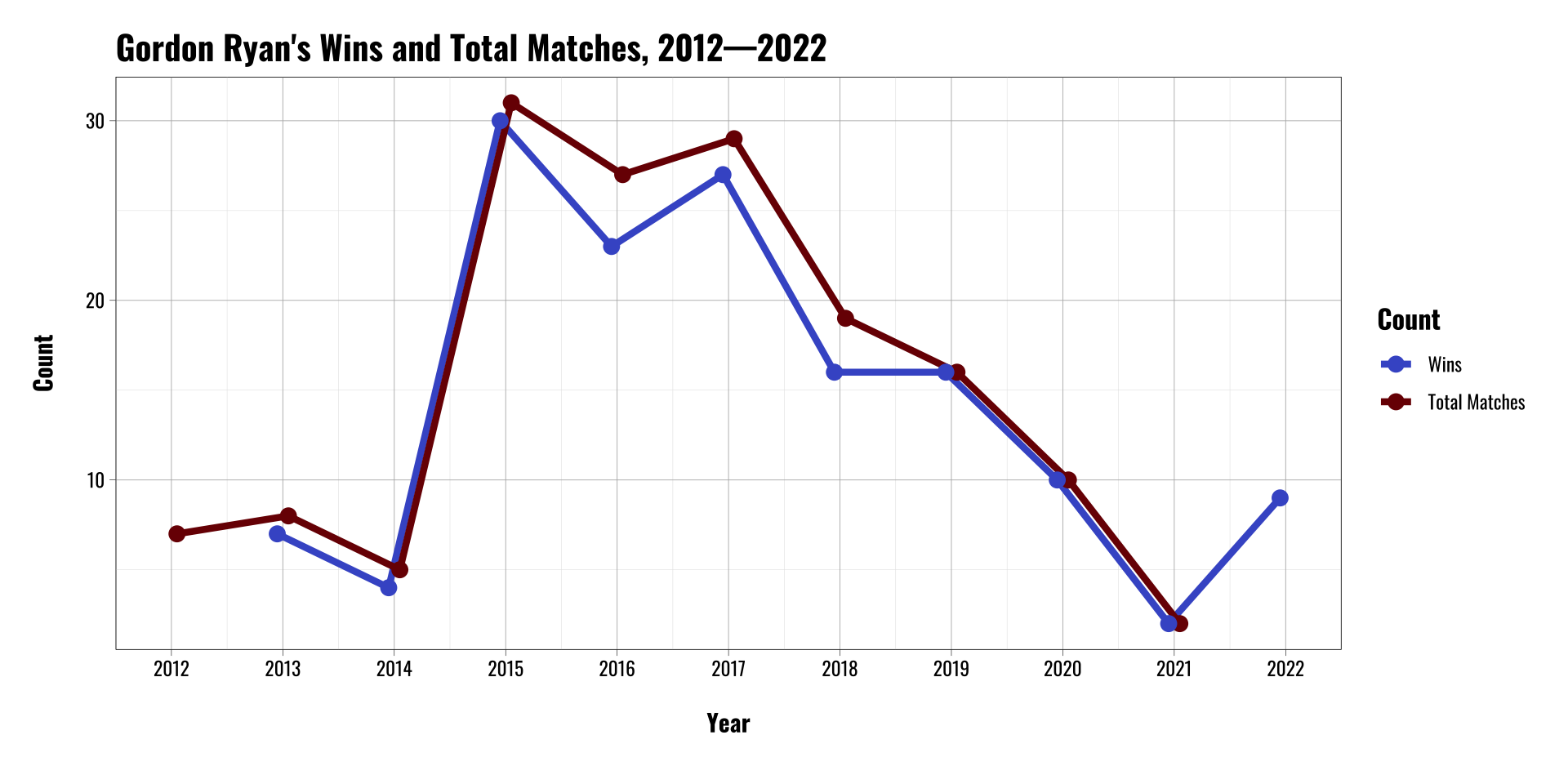
Social Science Workflow